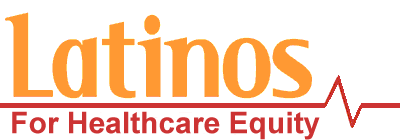In the debate over health care reform, no issue has produced more fury and sound bites than the question of whether to include a government-run insurance plan. It is not indispensable, and its role would be limited. Even so, we strongly support inclusion of a public option — the bigger and stronger the better. That is the best way to give consumers more choices, inject more competition into insurance markets, hold down the cost of insurance policies, and save money for the federal budget.
Here are some of the basic issues to consider, and the current legislative state of play:
WHO COULD ENROLL? While critics rail against a government takeover of health care, the reality is that the vast majority of Americans — those who have access to health insurance offered by large employers — would not be eligible to enroll in a public plan.
If Congress approves a public plan, it would be sold only on new insurance exchanges to people who now buy their policies directly from private insurers, work for small companies or are uninsured, often because they cannot afford to pay the high premiums charged for people without group coverage.
People eligible to use the exchanges could choose from a menu of private plans and, we hope, a cheaper public plan as well. Subsidies would be provided to help low- and moderate-income people pay their premiums.
DOES IT MAKE INSURANCE MORE AFFORDABLE? Most experts agree that a public plan should be able to provide insurance at a lower cost because it would have no need to earn a profit and could either demand or bargain for lower prices from health care providers. That should spur private insurers, eager to attract millions of new customers on the exchanges, to find ways to hold down their premiums as well, at least on the exchanges.
That would be good news for higher-income Americans on the exchange, roughly a fifth or less of the total, who would pay all of the cost of their insurance. It would benefit few, if any, of the rest, namely the low- and moderate-income people who would receive government subsidies to help buy insurance. All versions of the legislation would require these people to spend specified percentages of their income toward the premium and a government tax credit would then pay the rest.
The real savings would accrue to the government, which would then have to spend less money to subsidize purchases of lower-cost public or private insurance.
If there is a political trade-off to be made, the only good reason for abandoning a strong public plan would be in exchange for much more generous subsidies to make insurance affordable for all those who would be required to buy coverage or pay a fine. That would benefit consumers but put a greater strain on the Treasury.
WHAT’S THE STRONGEST PUBLIC PLAN? That is apt to emerge from the House, where the Democrats need only a majority to pass legislation and are constrained only by the need to satisfy conservatives in their own party. The speaker’s office is considering three options.
In the most robust, the public plan would pay hospitals and other providers based on Medicare reimbursement rates, typically lower than private insurance rates. That would allow the public plan to charge lower premiums than private plans, and save the government substantial money in reduced subsidies — more than $100 billion over the next decade. There is a danger that the low payments might push some hospitals, especially in rural areas, into deeper financial trouble.
A middle option would have the public plan negotiate reimbursement rates with providers just as private plans do; its bargaining power would depend on how many people it enrolled. Finally, a hybrid version would start with negotiations with providers to set prices for services, but switch to a Medicare-based formulation if the plan’s premiums rose too rapidly. Our preference would be for the most robust plan possible, with care taken to mitigate adverse effects on rural areas.
WHAT ARE THE OTHER IDEAS? The Senate has been far more hostile terrain for a public option because its filibuster rules require 60 votes to ensure passage.
In an effort to win support from conservative Democrats and possibly a Republican or two, the Finance Committee approved a bill with no public option, relying on nonprofit cooperatives with too little market power to be effective.
The Senate health committee approved a public plan that would negotiate rates with providers. Now the majority leader is trying to mesh the two bills into a form that could ultimately pass.
Several other proposals have been floated in hopes of drawing conservative support. One would establish a public plan only in states where private plans failed to offer affordable choices; the danger is that the criteria for judging affordability might be too lax. Others would let the states decide whether to set up a public plan. The strongest compromise would be to accept the Senate health committee’s provision for a national public plan that would negotiate rates with providers and allow states to opt out. Our guess is that few would do so.
A PUBLIC PLAN FOR EVERYBODY? Too often insurance markets are dominated by one or two big companies. We believe that, after a break-in period, the insurance exchanges, with a public option, should be opened to virtually everyone covered by large employer-based plans.
That would give the vast majority of Americans a bigger choice of insurance options than they now have at most workplaces — and a greater stake in pushing Congress to approve a strong public plan.
•
This editorial is a part of a continuing series by The Times that is providing a comprehensive examination of the policy challenges and politics behind the debate over health care reform. You can read all of these articles at: nytimes.com/edhealthcare2009

